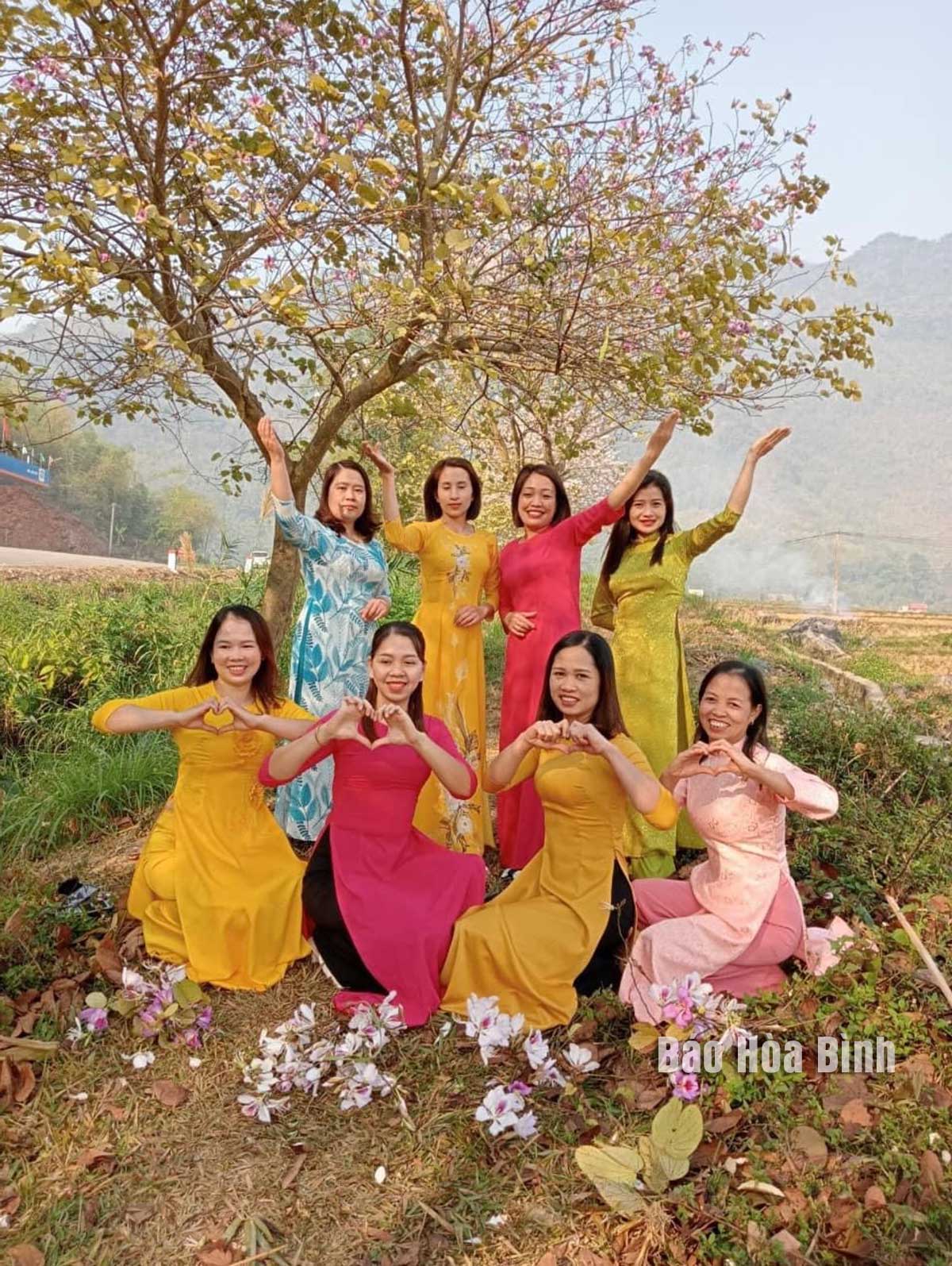
These days, tourist attractions in Mai Chau district, especially those highlighted by the charming and romantic white Ban (Bauhinia) flower blossoms, are attracting a large number of visitors from across the country. Visiting these sites, tourists can immerse themselves in the pristine and majestic beauty of nature.
Ban flower trees along roads in Mai Chau
district are starting to bloom, attracting many people to take photos.
March is the peak bloom time of Ban flowers. The
northwestern region is dyed white with a spectrum of flowers, resembling a
landscape painting. On mountain peaks, slopes, and rocky cliffs, everywhere is
a pristine white colour dotted with romantic purple spots. Looking closer,
full-bloom Ban flowers are like flying butterflies. Some flowers have a purple
petal among white ones, some have a light pink petal. The Ban leaves are shaped
like horseshoe, but many Thai girls like to think that they have the shape of
double hearts.
At close distances, you can see slender Ban
flowers resembling the hands of mountainous girls. When in full bloom, the
flower spreads wide like butterfly wings with beautiful pistils.
During March, nature enthusiasts often plan
journeys to the northwestern region to admire the beauty of the flower and at
the same time enjoy the fresh, invigorating atmosphere of the spring weather,
and to capture memorable moments.
The Ban flower is closely associated with the
cultural and spiritual life of ethnic communities in the Northwestern region,
especially the Thai ethnic group. It symbolises love and faithfulness through
the love story of a beautiful girl named Ban and a smart man named Khum. The
story has it that Ban and Khum were in love with each other. Unfortunately,
Ban’s parents did not accept their love because Khum was poor. Failing to
persuade her parents, the girl left her home on a Spring morning to look for
her lover. She went and went deep into the forest, and finally collapsed and
died. In the spot where she died, trees grew with thousands of flowers, the
petals of which look like the girl’s beautiful hands. Khum came to the place
but all he could find was Ban’s head scarf. He desperately called her name
until he died and became a bird named Loc Khum. Since then, when spring comes,
white Ban flowers blossom across the forest, while Loc Khum birds keep on
singing like the voice of the man calling his lover throughout the Ban flower
season.
There is another story about the flower, which
says the flowers have their origin in the white cloth that local people tied on
trees in mourning of local insurgents who died while fighting against evil and
oppressing forces.
The flower is also a symbol of pride in the
treasure trove of folklore literature of the ethnic minorities in the
Northwestern region, as it represents the purity and innocence of women. It is
also a symbol of happiness, love, and prosperity, as well as the filial piety
of children towards their parents and reverence for spiritual deities.
A diverse chain of eco-tourism and resort destinations concentrated in Hoa Binh city and the districts of Tan Lac, Da Bac, and Luong Son… Along with the launch of several key high-quality resort tourism projects, these developments have reshaped the landscape and enhanced the appeal of Hoa Binh as a travel destination.
Boasting diverse terrain, a mild climate, and rich natural resources, Cao Phong district is increasingly asserting its place on Vietnam’s tourism map, attracting both domestic and foreign visitors. The district is renowned for its stunning landscapes, majestic mountains, a crystal-clear hydropower lake, and the unique cultural identity of local ethnic groups.
With its pristine landscapes, unique cultural heritage of Muong ethnic minority, and an expanding range of visitor experiences, Tan Lac district of Hoa Binh has fast become a captivating destination for both domestic and international tourists.
Until now, Sung village in Cao Son commune, Da Bac district remains the only Dao ethnic community in Hoa Binh province to develop a community-based tourism model. Beyond its untouched natural landscapes, cultural identity serves as the cornerstone attraction for visitors.
Alongside the diverse cultural identities of the Kinh, Muong, Tay, Thai, Dao, and Mong ethnic people, Hoa Binh province is also renowned as the "capital" of the northwestern Vietnamese cuisine, offering unique and distinctive dishes. At festivals, during Lunar New Year (Tet), or on significant family or community occasions, special dishes are prepared, leaving a lasting impression on visitors.
A Phong Linh (Yellow Tabebuia) flower garden in Thang village, Thach Yen commune, Cao Phong district is currently in full bloom, drawing a large number of visitors.



